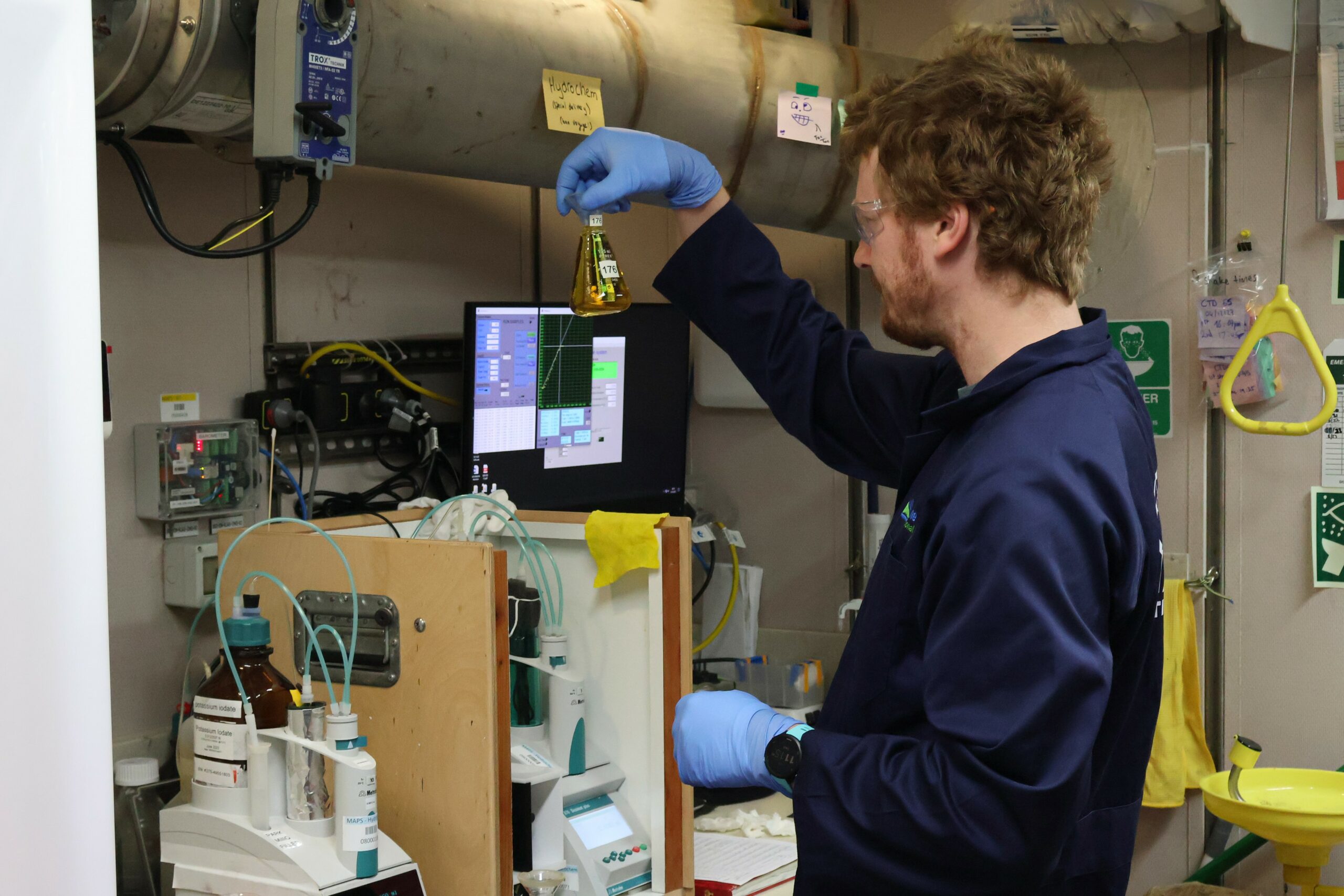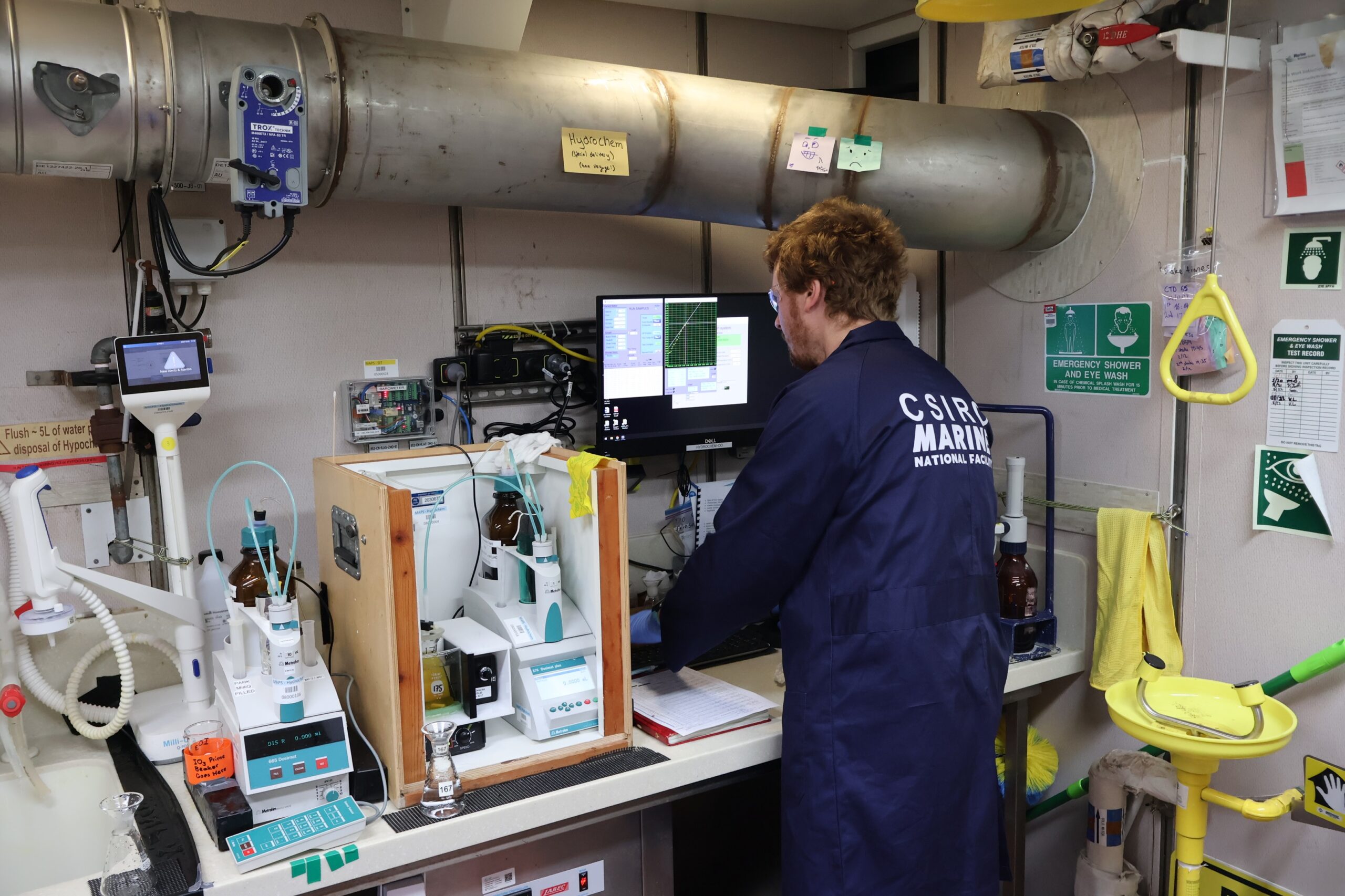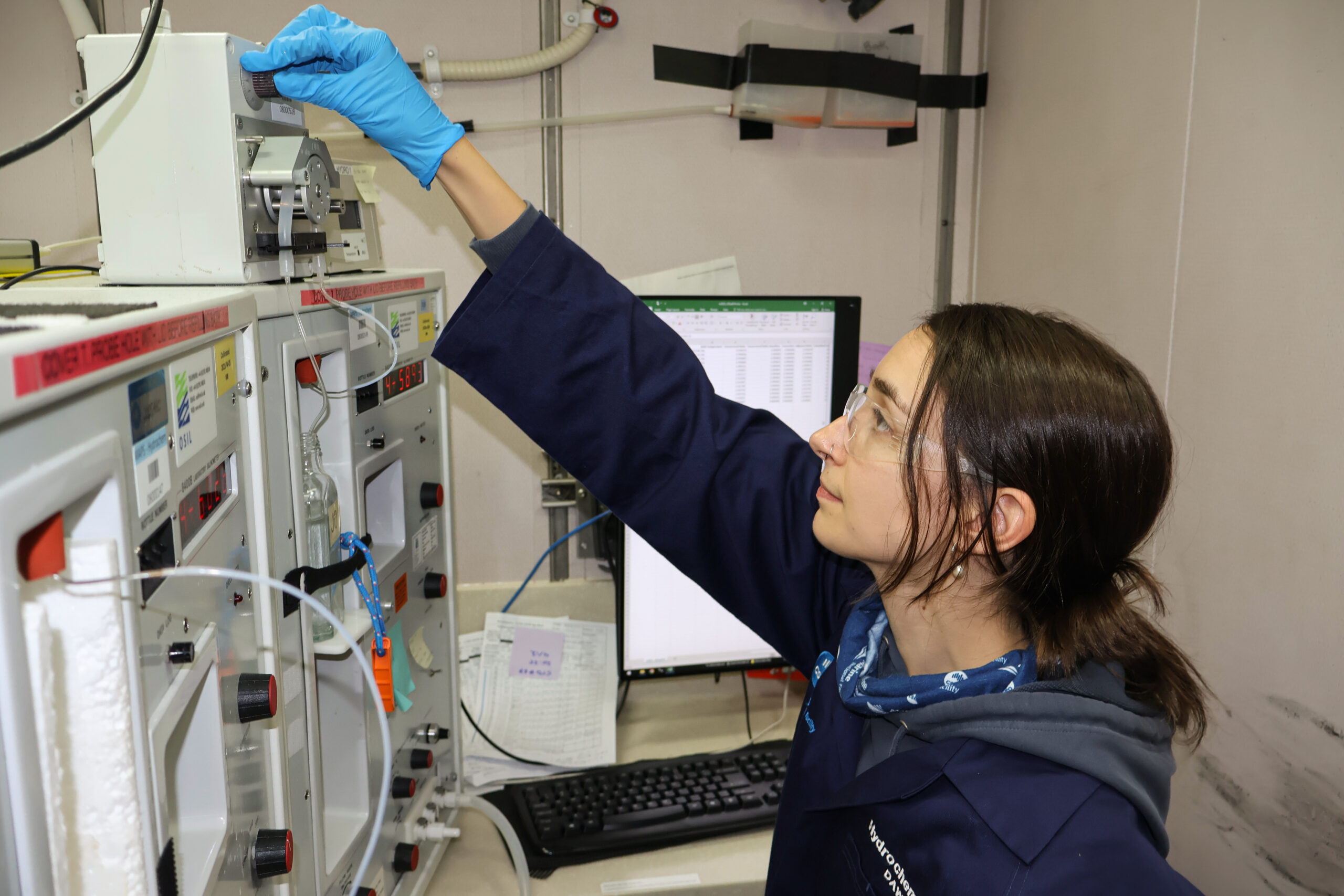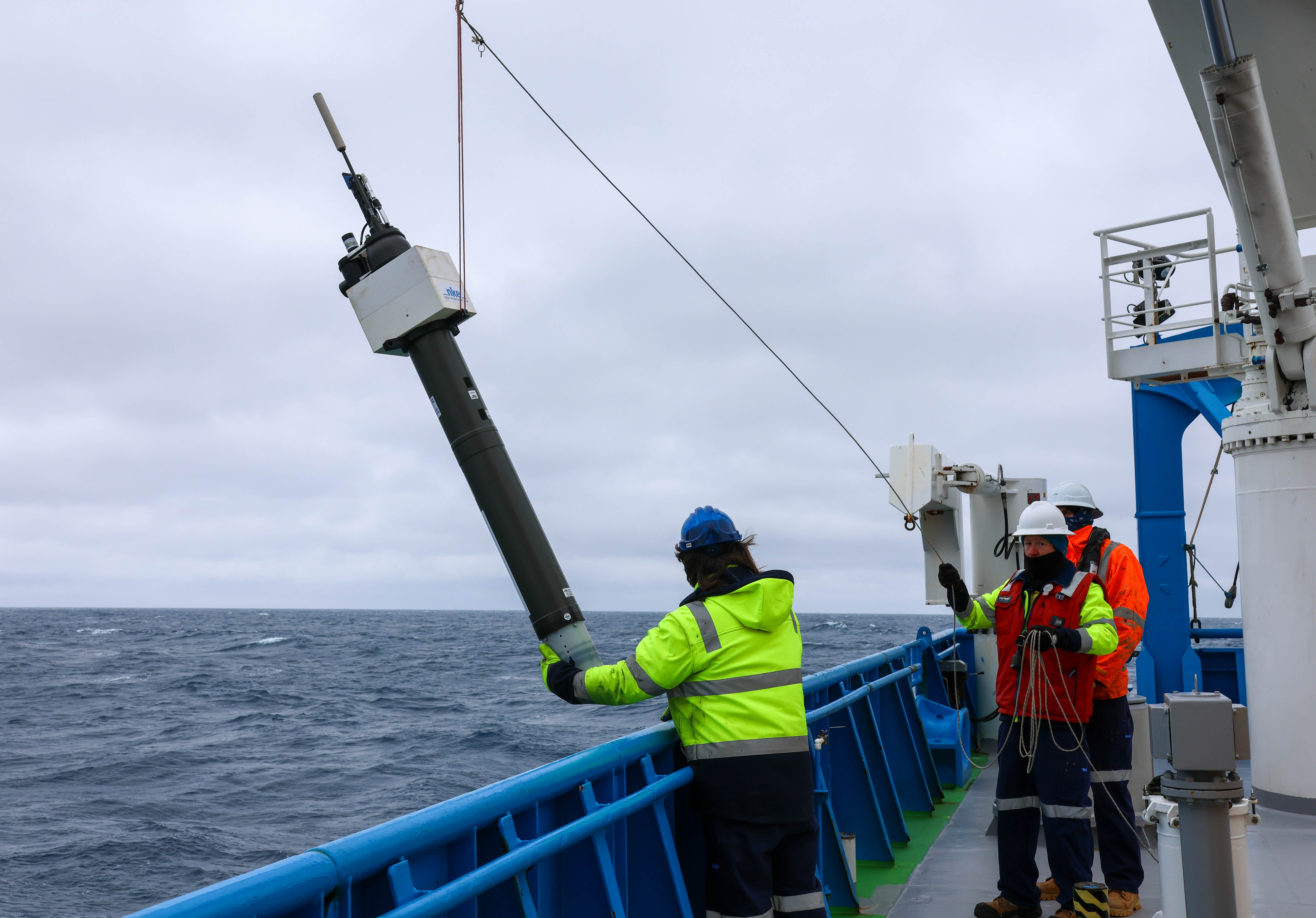Meet Hydrochem: our floating lab
The hydrochemistry team on board CSIRO research vessel (RV) Investigator specialises in the measurement of dissolved oxygen, salinity and nutrients in sea water – so it’s no surprise that their lab opens directly to the CTD space where water samples are taken.
Oxygen, salinity and nutrients are three parameters that are key to understanding the ocean’s movement, health and ecology – in the case of the FOCUS voyage, at all levels of the Antarctic Circumpolar Current in the Southern Ocean, from the abyss four kilometres deep to the surface.
Salinity governs the density and buoyancy of a water mass, and accurate salinity measurements are like a “fingerprint” of ocean layers as water becomes saltier or fresher.
Dissolved oxygen is a vital indicator for the ability of marine life to survive. Levels decrease as oxygen is consumed by living things, so dissolved oxygen gives an indication of the age of water bodies.
Nutrients (such as nitrate, nitrite, phosphate, silicate and ammonium) are the primary food source for the ocean’s primary producers, the phytoplankton.
The CTD (Conductivity-Temperature-Depth) instrument collects water samples at various depths, which are sampled separately for each analysis. This voyage aims for 130 plunges of the CTD instrument, and with up to 36 bottles on one cast, this means a lot of samples for the hydrochem lab to analyse!
This research is supported by a grant of sea time on RV Investigator from the CSIRO Marine National Facility which is supported by the Australian Government’s National Collaborative Research Infrastructure Strategy (NCRIS).








